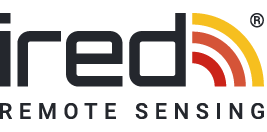A thermal imaging survey uses an infrared camera to detect subtle differences in temperature. Suitable for both residential and commercial buildings, these surveys highlight areas of heat and energy loss. This allows for the collection of valuable information about a building’s performance, as well as construction.
These are some of the issues that thermal surveys can highlight:
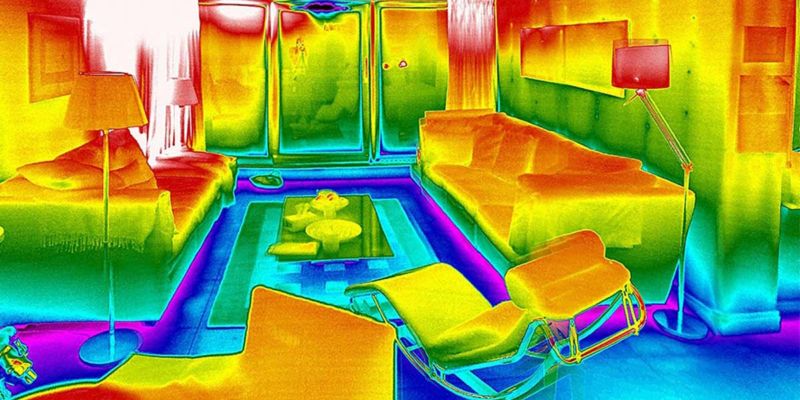
Thermal surveys can accurately identify areas of heat loss
1. Heat Loss
A thermal imaging survey can identify, capture, and assess heat loss within buildings. Knowing where heat is escaping from means property owners can take steps to prevent further loss. This includes improving insulation and reducing air leakage. These non-intrusive surveys also allow residents to ensure that a building is energy efficient, as well as adequately heated throughout. Fixing the source of heat loss may also lead to a substantial reduction in household energy bills.
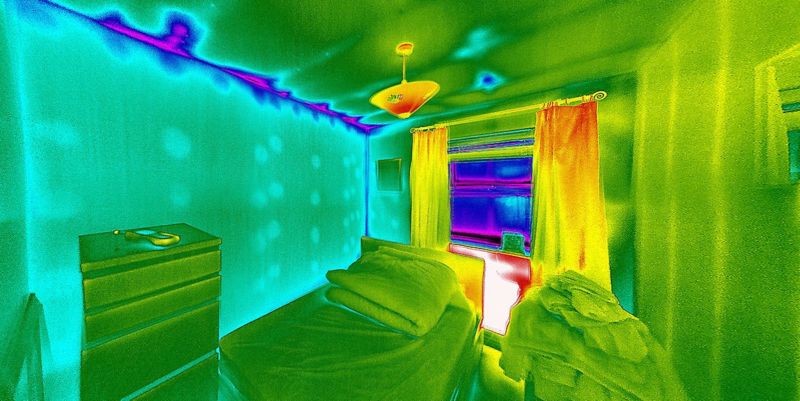
A thermal imaging survey can locate missing or damaged insulation
2. Missing, Damaged or Non-Performing Insulation
Insulation is essential in keeping heat or cold from infiltrating a building, and has a large impact on energy efficiency. As such, it is important to locate the areas where insulation may not be performing as it should. Thermal imaging surveys can locate areas where insulation is missing. A lack of insulation in a certain area could be due to design oversights, or the use of the wrong materials.
Thermal surveys can also identify where there is damage to insulating materials. This could be because of an accident during construction, such as falling mortar. Following construction, wildlife can also cause disturbance to insulation, and some materials may break down naturally over time. As such, it’s important to ensure insulation is fit for purpose all year-round.
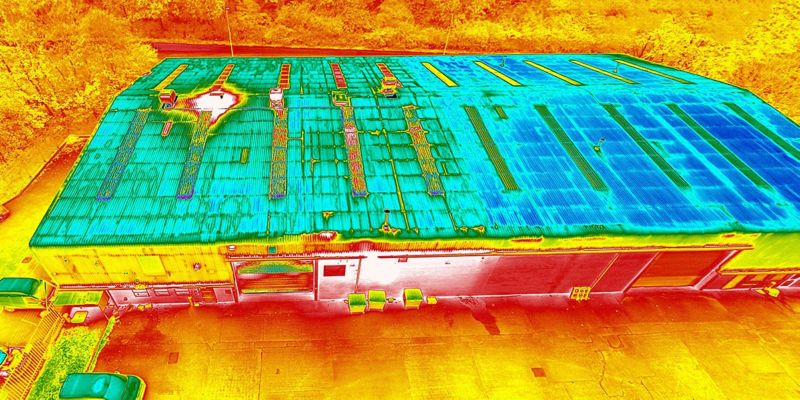
Air leakage may lead to excessive heat loss
3. Air Leakage
Air leakage is the unintentional intrusion of outside air into a building. This can occur when air enters through cracks or holes in the building fabric, which may lead to excessive heat loss. Significant Air leakage has an impact on a building’s energy efficiency rating, so it’s important to fix these areas where air enters accidentally. Thermal surveys can accurately locate areas of infiltration to improve ventilation and thermal comfort throughout a building.
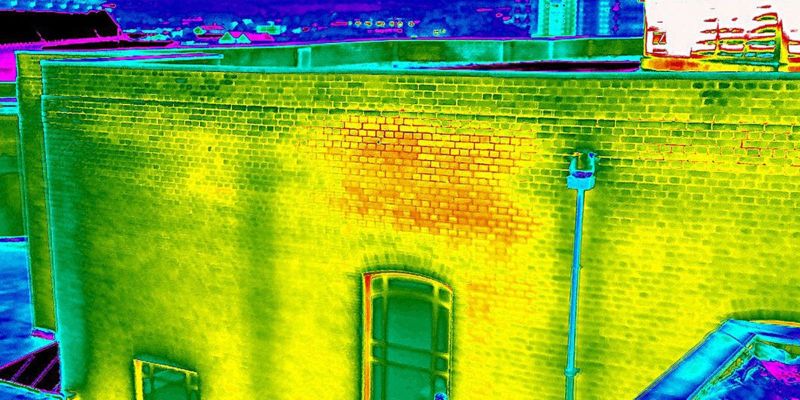
A thermal imaging survey can identify where water from outside sources enters a building
4. Water Ingress
Water ingress occurs when water from outside sources makes its way into a building. There are many ways that water can enter a building. The most common causes are damaged or deteriorating materials, which means that water is able to permeate through the roof or walls.
It’s important that buildings are watertight, as this prevents further deterioration of building materials. The first step to fixing water ingress is to identify the source of intrusion, which may not always be visible. A thermal imaging survey can accurately locate where water penetrates the building materials. This allows property owners to resolve the water ingress before repairing any property damage.

Thermal surveys can locate areas where condensation is likely to form
5. Condensation
Another issue that thermal surveys can help to prevent is condensation, which is the most common cause of damp in buildings. Condensation occurs when warm, moist air comes into contact with cold surfaces. This can create further issues, such as mould, staining, and damage to building fabrics. As such, condensation has a large impact on a building’s performance.
Inconsistent heating and poor ventilation are both common causes of condensation. This is because the temperature of the air in a building has a large impact on the amount of condensation that forms. Thermal imaging is a useful method for identifying areas of poor air flow and where damp emerges. This allows property owners to adopt methods that prevent condensation before it develops.
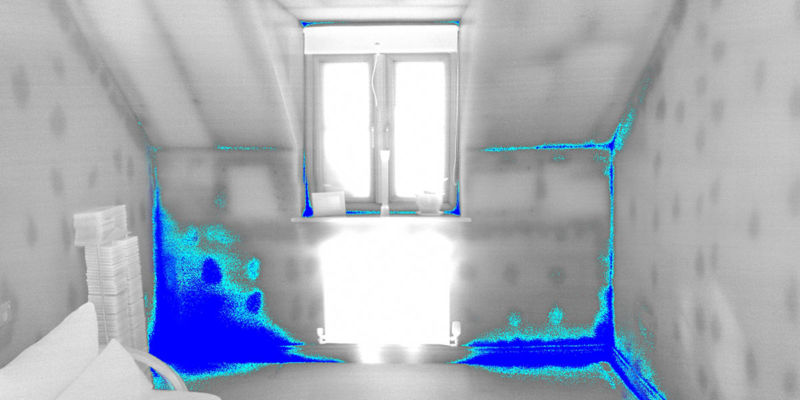
Mould is typically caused by excess moisture within a building
6. Mould Growth
Mould, also known as mildew, is a fungal growth caused by excess moisture. The issue affects both new and older buildings, and is not always visible. Exposure to mould can cause health issues such as nose and throat irritation, and may impact a range of health issues, including respiratory problems such as asthma. Generally, the existence of mould in a building is due to issues such as damp, as well as inadequate air flow.
Thermal imaging provides an insight into a room’s temperature conditions, and is ideal for locating where mould is likely to develop. This includes areas of excess moisture, such as leaking pipes. As such, a thermal imaging survey allows property owners to make the changes needed to prevent further mould growth.
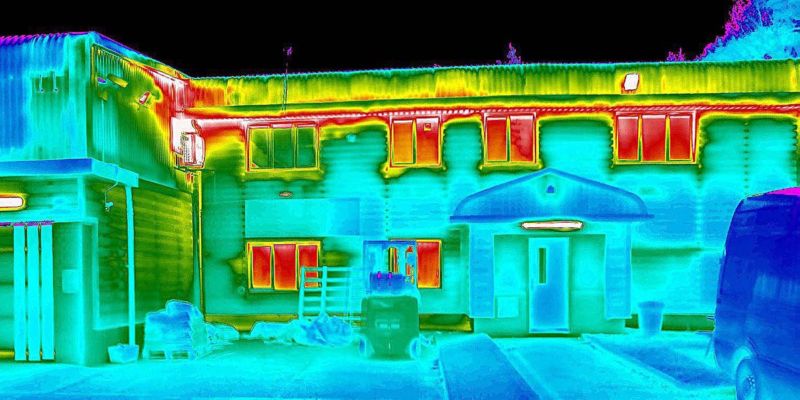
A thermal imaging survey can help to improve thermal comfort
7. Thermal Comfort
Thermal comfort is related to the thermal environment within a building. If a person is satisfied with their thermal environment, this means they do not feel either too hot or too cold. The human body is capable of detecting temperature differences as low as 1ºC – it’s difficult to define thermal comfort as an exact temperature, because the level of ‘comfort’ varies between individuals.
There are a range of factors that can have an impact on the level of thermal comfort. These include air temperature and velocity – one example being draughts, which generally make people feel cold. Thermal imaging can identify some of the causes of thermal discomfort, such as air leakage, which allows property owners to make the improvements needed to increase thermal comfort within the building.
Nationwide Thermal Imaging Surveys
A thermal imaging survey provides accurate and reliable data to assess heat loss and energy consumption. As such, thermal surveys are ideal for property owners or management companies looking to maintain good thermal performance, as well as a comfortable living environment.
iRed delivers certified thermal imaging surveys nationwide. Our thermographers are accredited by both the British Institute of Non-Destructive Testing (BINDT) and the Awarding Body of the Built Environment (ABBE). Using the latest technology, iRed’s thermal imaging surveys are a non-destructive assessment of a building’s performance, delivering data and insights with a practical value.
To learn more about iRed’s Building Thermal Imaging surveys, visit: https://ired.co.uk/thermal-imaging/building-survey/

